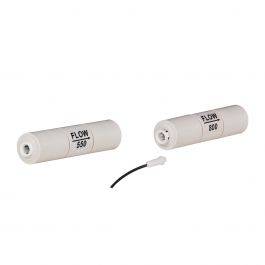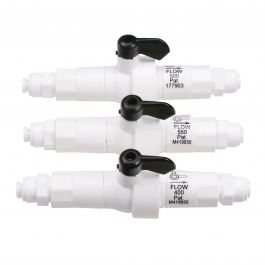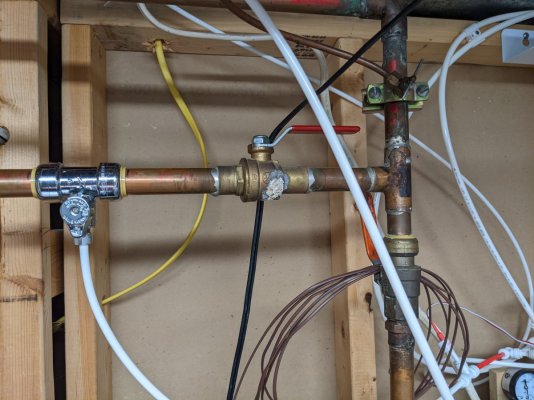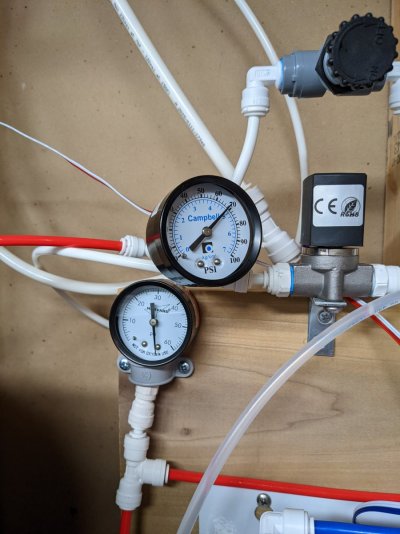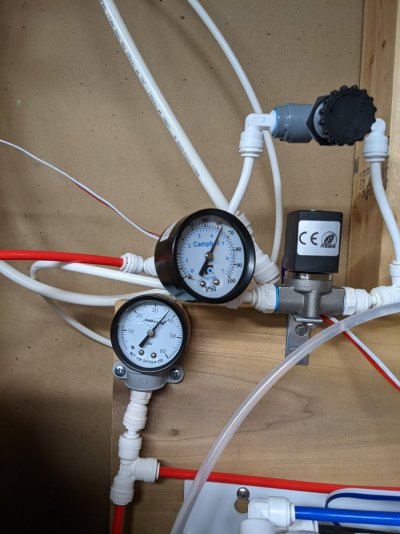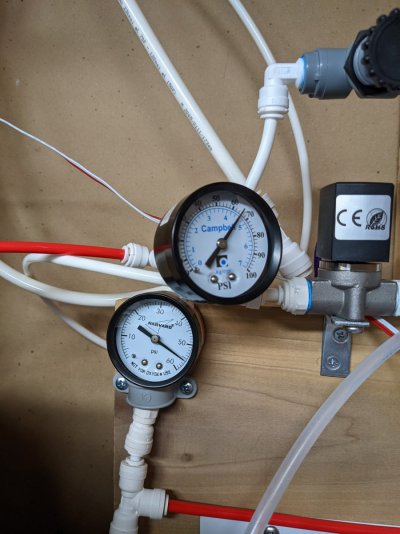I agree with you thereEasy way to get water but not a very good long term solution especially with your hard water. I worked for an appliance store when I was in high school a number of times I would get sent out to look at someones ice maker and my repair would be shutting off the piercing valve and turning it back on to clean the build up off the pierce. I do not think that is your problem since I do not remember a low pressure when making RO for you.
However, my apprehension about the needle valve reducing flow is coming from an observation we had while troubleshooting this system:
I connected a tube straight from the needle valve and let it drain in a bucket. I took a video of the flow of water coming out from it. Sent it to Joe from Pure Water Products (I bought my RODI setup from him).
He then sent me a video of the same thing in his office.
The water flow shooting out from my tubing was significantly slower than his water flow.
Interestingly, water pressure on his side and my home measures very closely.
Since the flow is not good, I suspect it may not do a good job while flushing the membrane.
Hence the fancy sharkbite thingy ;-) But lets see if that really makes any difference!







